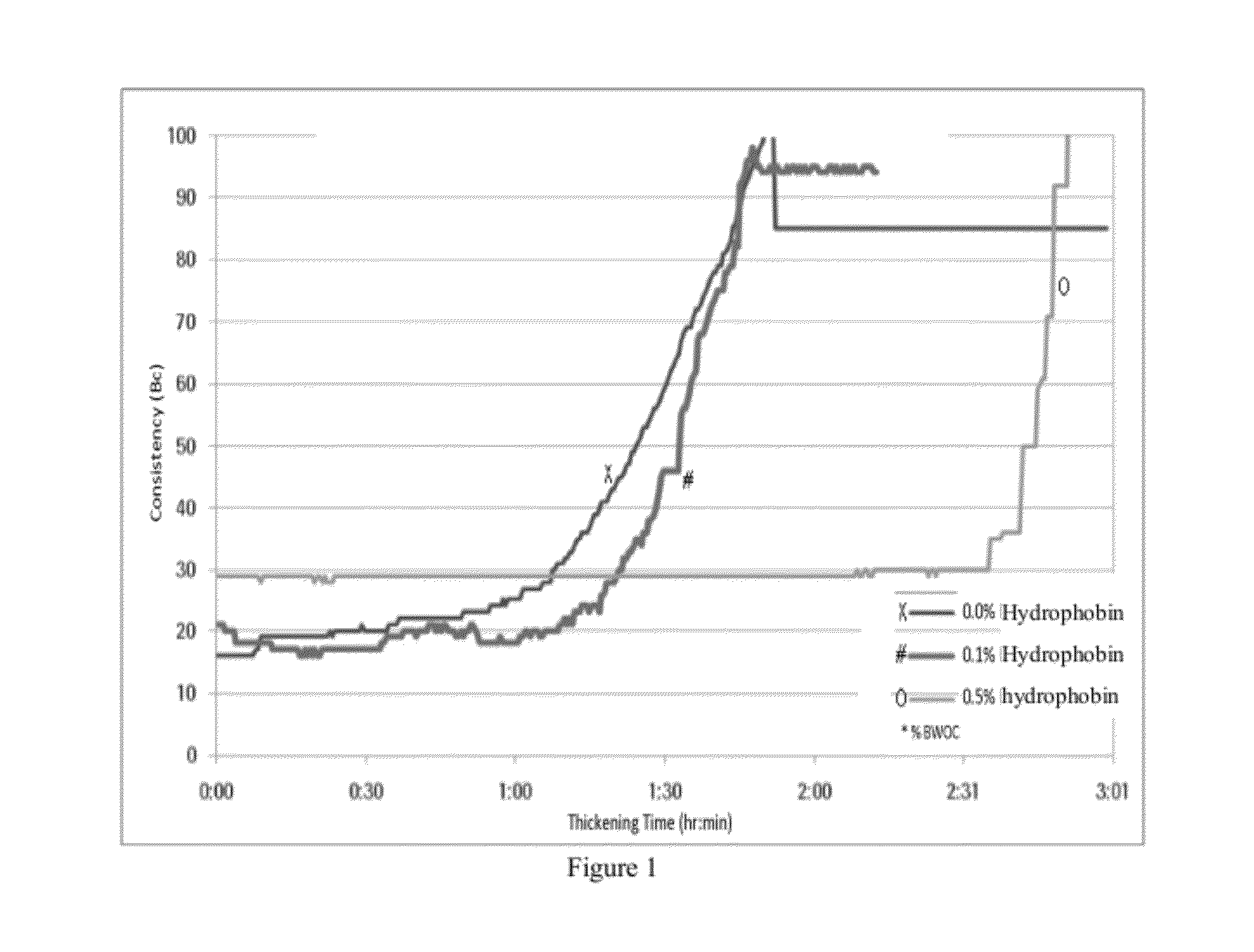Compositions and methods for well completions
a technology of subterranean wells and compositions, applied in the direction of sealing/packing, chemistry apparatus and processes, borehole/well accessories, etc., can solve the problems of increasing the number of retarders that may be used, and becoming more and more difficult to develop efficient cement retarders (and other types of additives)
- Summary
- Abstract
- Description
- Claims
- Application Information
AI Technical Summary
Benefits of technology
Problems solved by technology
Method used
Image
Examples
example 1
[0025]Three Portland-cement slurries were prepared with the following base-slurry composition: Class H cement, 0.2% polypropylene glycol antifoam agent by weight of cement, and 38.8% water by weight of cement (BWOC). The slurry density was 1970 kg / m3 (16.4 lbm / gal). Hydrophobin retarder was added at the following concentrations: 0%, 0.1% and 0.5% by weight of cement. The hydrophobin was as disclosed in Wohlleben W et al.: “Recombinantly Produced Hydrophobins from Fungal Analogues as Highly Surface-Active Performance Proteins,” Eur Biophys J., 39 (3) February 2010: 457-468.
[0026]Thickening time tests were performed in a pressurized consistometer at 52° C. (125° F.) and 35.6 MPa (5160 psi), according to the standard procedure described in ISO Publication 10426-2. The results, presented in Table 1 and FIG. 1, show that hydrophobin is an effective cement retarder. Furthermore, the fast viscosity transition from 30 Bc to 100 Bc, sometimes referred to as a “right-angle set,” is a desirabl...
PUM
| Property | Measurement | Unit |
|---|---|---|
| Fraction | aaaaa | aaaaa |
| Percent by mass | aaaaa | aaaaa |
| Viscosity | aaaaa | aaaaa |
Abstract
Description
Claims
Application Information
 Login to View More
Login to View More - R&D
- Intellectual Property
- Life Sciences
- Materials
- Tech Scout
- Unparalleled Data Quality
- Higher Quality Content
- 60% Fewer Hallucinations
Browse by: Latest US Patents, China's latest patents, Technical Efficacy Thesaurus, Application Domain, Technology Topic, Popular Technical Reports.
© 2025 PatSnap. All rights reserved.Legal|Privacy policy|Modern Slavery Act Transparency Statement|Sitemap|About US| Contact US: help@patsnap.com

